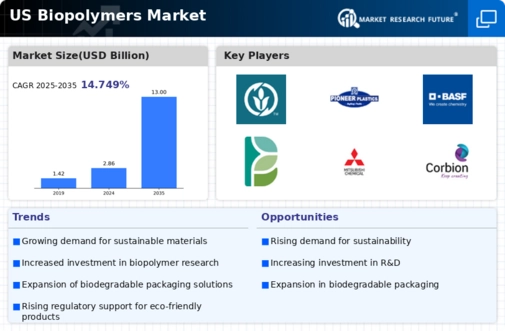Expansion of Application Areas
The bio emulsion-polymers market is witnessing an expansion in application areas, which serves as a crucial driver for its growth. Industries such as packaging, textiles, and personal care are increasingly incorporating bio emulsion-polymers into their products. This diversification is driven by the versatility of bio emulsion-polymers, which can be tailored for various uses, from biodegradable packaging materials to skin-friendly formulations in cosmetics. Market projections indicate that the packaging sector alone is anticipated to grow by 6% annually, further boosting the demand for bio emulsion-polymers. This trend suggests a promising future for the bio emulsion-polymers market as it adapts to meet the needs of diverse industries.
Rising Demand for Eco-Friendly Products
The increasing consumer preference for sustainable and eco-friendly products is a primary driver in the bio emulsion-polymers market. As awareness of environmental issues grows, consumers are actively seeking alternatives to traditional petroleum-based products. This shift is reflected in market data, indicating that the demand for bio-based materials is projected to grow at a CAGR of approximately 10% over the next five years. Companies are responding by developing innovative bio emulsion-polymers that meet these consumer expectations, thereby enhancing their market presence. The bio emulsion-polymers market is likely to benefit from this trend, as manufacturers invest in research and development to create products that align with eco-conscious consumer values.
Technological Innovations in Polymer Production
Technological advancements in polymer production processes are significantly influencing the bio emulsion-polymers market. Innovations such as bio-based catalysts and improved polymerization techniques are enhancing the efficiency and sustainability of production. These advancements not only reduce production costs but also minimize environmental impact, making bio emulsion-polymers more attractive to manufacturers. Recent data indicates that companies investing in these technologies can achieve production cost reductions of up to 15%. As a result, the bio emulsion-polymers market is likely to see increased competition and a wider range of products available to consumers, further driving market growth.
Growth in Construction and Automotive Industries
The bio emulsion-polymers market is experiencing a surge in demand due to the growth of the construction and automotive sectors. These industries are increasingly adopting bio-based materials for their applications, driven by the need for sustainable solutions. For instance, bio emulsion-polymers are utilized in adhesives, coatings, and sealants, which are essential in construction projects. Market analysis suggests that the construction sector alone is expected to grow by 5% annually, further propelling the demand for bio emulsion-polymers. Additionally, the automotive industry is focusing on lightweight materials to improve fuel efficiency, which bio emulsion-polymers can provide. This trend indicates a robust future for the bio emulsion-polymers market as it aligns with industry needs.
Increased Regulatory Support for Bio-Based Products
Regulatory frameworks in the US are increasingly favoring the use of bio-based products, which is a significant driver for the bio emulsion-polymers market. Government initiatives aimed at promoting sustainable materials are encouraging manufacturers to shift towards bio-based alternatives. For example, the USDA BioPreferred program is designed to increase the purchase and use of bio-based products, providing a competitive edge to those in the bio emulsion-polymers market. This regulatory support is expected to enhance market growth, as companies align their product offerings with government standards and consumer expectations for sustainability.

















Leave a Comment